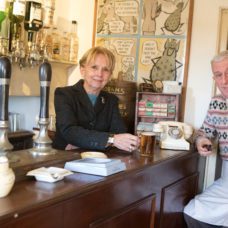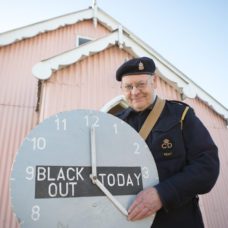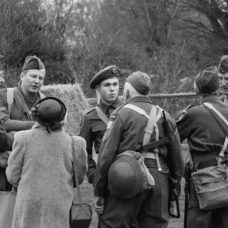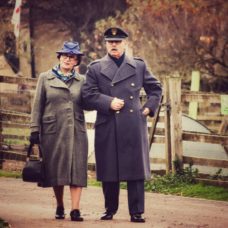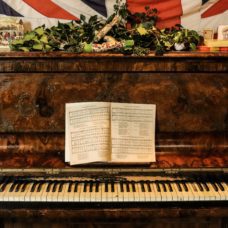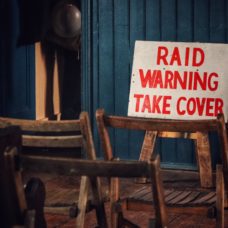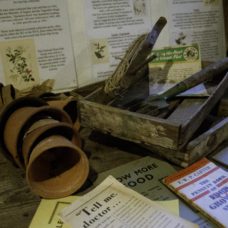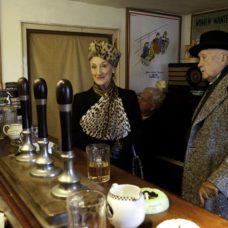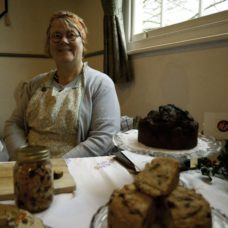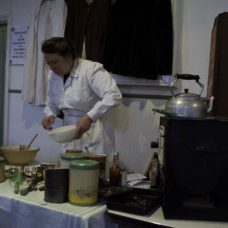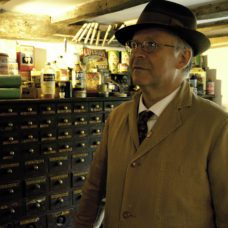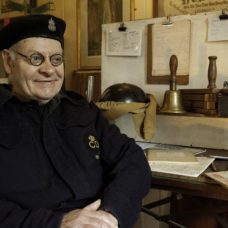Remembrance: Stepping into wartime shoes
November is the month of remembrance and this year marks 80 years since the start of World War II. Here at Kent Life, as guardians and preservers of Kent’s rural heritage and historic buildings from bygone times, we’re well-placed to help our visitors remember.
A Roll of Honour that pays tribute to our brave heroes from the village of Ivy Hatch, near Sevenoaks, who fought in the two World Wars is situated in our pretty, late 19th century Cuxton Chapel. It is one of two memorials from the village.
As well as honouring our war heroes, we are hosting our annual event Christmas on the Home Front, which paints an authentic picture of what life was like for those left at home, while the Battle of Britain raged over the Kent countryside during the Second World War.
Imagine a Christmas with no twinkly lights when you walk down the road at dusk; no turkey or pudding, no wine or sweets, no gifts, no father or brother or son to share it with. Join us for a journey of remembrance….
After the outbreak of the War in 1939, there were relatively few restrictions that Christmas. Blackout rules meant that Christmas Trees could no longer light up windows and festive shop windows were obscured by anti-blast tape. Food was not yet rationed but with many children already evacuated to remote areas and fathers, sons and brothers signing up to serve their country, family absence was already keenly felt.
For the first year of the war, gifts for children were mainly topical: miniature Red Cross, RAF or naval uniforms were popular. Card games – which that year included ‘Blackout’, and ‘Vacuation’ – were also available, as were many ‘annual’ books, including the Blackout Book. For adults, practical gifts included steel or Bakelite helmets, and gas mask cases in Rexine or leather.
By the following Christmas, rationing had come into force and this meant that food was getting scarce. There were no turkeys, gin, sherry, chocolates or fruit; while cigarettes, cigars and tobacco were in short supply and toys were very expensive.
Some popular gift suggestions to counter the lack of provisions and encourage people to ‘Dig for Victory’ and grow their own vegetables included: gardening tools, books, bottling jars, seeds and some magazines even recommended a bag of fertilizer. The most popular present for Christmas 1940, however, was soap.
From 1941 onwards when rationing had taken hold and even clothes were becoming scarce, many of the magazines gave ideas for home-made gifts. People made or renovated presents. “Make do and mend” became a popular wartime refrain.
People made their own Christmas decorations, or cut pieces of holly, shrub, or any available greenery and decorated them with pinecones or whitewash. The Ministry of Food suggested:
‘A Christmassy sparkle is easy to add to sprigs of holly or evergreen for use on puddings. Dip your greenery in a strong solution of Epsom salts. When dry it will be beautifully frosted.’
By 1943, The Ministry of Food estimated that only one family in ten would get turkey or goose for their Christmas dinner that year. A lot of Christmas food was ‘mock’ (ie fake). Christmas recipes included mock ‘goose’, ‘turkey’ (made from lamb), ‘cream’ and ‘marzipan’.
The last wartime Christmas in 1944 was probably the most joyless Christmas of the war. After the Allied Normandy invasion in June, and the rapid advance of Allied forces through France, people had hoped once more that it might be ‘all over by Christmas’. But this was not to be.
To soften the blow and boost morale, the Ministry of Food announced Christmas treats – an extra 1 1/2 pounds of sugar, 8 pennyworth (3.5p) of meat, and half a pound of sweets.
(Source: bbc.co.uk)
Come and experience all of this at Christmas on the Home Front: visit a typical grocer’s shop from the era in the World War II cottages and find out more about rationing; test your resourcefulness and ingenuity by taking part in ‘make do and mend’ lessons; watch drill displays by the Home Guard; be a pupil in a 1940’s school lesson in our old school room; and visit a rehabilitation centre for injured RAF pilots.
- EXPLORE Find out all about the amazing parts of our site that make Kent Life such a fun day out!
- PLAN YOUR VISIT Opening times, prices, how to get here, and annual memberships.
- EVENTS We've got events for all, all year round- from our annual hop festival to Christmas and Fireworks celebrations!
- ABOUT US We've been going quite some time - as has Kent! Check out our story here.

